Title Page
Copyright Page
Foreword
Editors
Contributors
Contents
Part I: Foundations
Chapter 1 Introduction
1.1 Purpose of the Handbook
1.2 Structure and Content
1.3 Future Research
Chapter 2 Constraint Satisfaction: An Emerging Paradigm
2.1 The Early Days
2.2 The Constraint Satisfaction Problem: Representation and Reasoning
2.3 Conclusions
Chapter 3 Constraint Propagation
3.1 Background
3.2 Formal Viewpoint
3.3 Arc Consistency
3.4 Higher Order Consistencies
3.5 Domain-Based Consistencies Stronger than AC
3.6 Domain-Based Consistencies Weaker than AC
3.7 Constraint Propagation as Iteration of Reduction Rules
3.8 Specific Constraints
Chapter 4 Backtracking Search Algorithms
4.1 Preliminaries
4.2 Branching Strategies
4.3 Constraint Propagation
4.4 Nogood Recording
4.5 Non-Chronological Backtracking
4.6 Heuristics for Backtracking Algorithms
4.7 Randomization and Restart Strategies
4.8 Best-First Search
4.9 Optimization
4.10 Comparing Backtracking Algorithms
Chapter 5 Local Search Methods
5.1 Introduction
5.2 Randomised Iterative Improvement Algorithms
5.3 Tabu Search and Related Algorithms
5.4 Penalty-Based Local Search Algorithms
5.5 Other Approaches
5.6 Local Search for Constraint Optimisation Problems
5.7 Frameworks and Toolkits for Local Search
5.8 Conclusions and Outlook
Chapter 6 Global Constraints
6.1 Notation and Preliminaries
6.2 Examples of Global Constraints
6.3 Complete Filtering Algorithms
6.4 Optimization Constraints
6.5 Partial Filtering Algorithms
6.6 Global Variables
6.7 Conclusion
Chapter 7 Tractable Structures for Constraint Satisfaction Problems
7.1 Background
7.2 Structure-Based Tractability in Inference
7.3 Trading Time and Space by Hybrids of Search and Inference
7.4 Structure-Based Tractability in Search
7.5 Summary and Bibliographical Notes
Chapter 8 The Complexity of Constraint Languages
8.1 Basic Definitions
8.2 Examples of Constraint Languages
8.3 Developing an Algebraic Theory
8.4 Applications of the Algebraic Theory
8.5 Constraint Languages Over an Infinite Set
8.6 Multi-Sorted Constraint Languages
8.7 Alternative Approaches
8.8 Future Directions
Chapter 9 Soft Constraints
9.1 Background: Classical Constraints
9.2 Specific Frameworks
9.3 Generic Frameworks
9.4 Relations among Soft Constraint Frameworks
9.5 Search
9.6 Inference
9.7 Combining Search and Inference
9.8 Using Soft Constraints
9.9 Promising Directions for Further Research
Chapter 10 Symmetry in Constraint Programming
10.1 Symmetries and Group Theory
10.2 Definitions
10.3 Reformulation
10.4 Adding Constraints Before Search
10.5 Dynamic Symmetry Breaking Methods
10.6 Combinations of Symmetry Breaking Methods
10.7 Successful Applications
10.8 Symmetry Expression and Detection
10.9 Further Research Themes
10.10 Conclusions
Chapter 11 Modelling
11.1 Preliminaries
11.2 Representing a Problem
11.3 Propagation and Search
11.4 Viewpoints
11.5 Expressing the Constraints
11.6 Auxiliary Variables
11.7 Implied Constraints
11.8 Reformulations of CSPs
11.9 Combining Viewpoints
11.10 Symmetry and Modelling
11.11 Optimization Problems
11.12 Supporting Modelling and Reformulation
Part II: Extensions, Languages, and Applications
Chapter 12 Constraint Logic Programming
12.1 History of CLP
12.2 Semantics of Constraint Logic Programs
12.3 CLP for Conceptual Modeling
12.4 CLP for Design Modeling
12.5 Search in CLP
12.6 Impact of CLP
12.7 Future of CLP and Interesting Research Questions
Chapter 13 Constraints in Procedural and Concurrent Languages
13.1 Procedural and Object-Oriented Languages
13.2 Concurrent Constraint Programming
13.3 Rule-Based Languages
13.4 Challenges and Opportunities
13.5 Conclusion
Chapter 14 Finite Domain Constraint Programming Systems
14.1 Architecture for Constraint Programming Systems
14.2 Implementing Constraint Propagation
14.3 Implementing Search
14.4 Systems Overview
14.5 Outlook
Chapter 15 Operations Research Methods in Constraint Programming
15.1 Schemes for Incorporating OR into CP
15.2 Plan of the Chapter
15.3 Linear Programming
15.4 Mixed Integer/Linear Modeling
15.5 Cutting Planes
15.6 Relaxation of Global Constraints
15.7 Relaxation of Piecewise Linear and Disjunctive Constraints
15.8 Lagrangean Relaxation
15.9 Dynamic Programming
15.10 Branch-and-Price Methods
15.11 Benders Decomposition
15.12 Toward Integration of CP and OR
Chapter 16 Continuous and Interval Constraints
16.1 From Discrete to Continuous Constraints
16.2 The Branch-and-Reduce Framework
16.3 Consistency Techniques
16.4 Numerical Operators
16.5 Hybrid Techniques
16.6 First Order Constraints
16.7 Applications and Software packages
16.8 Conclusion
Chapter 17 Constraints over Structured Domains
17.1 History and Applications
17.2 Constraints over Regular and Constructed Sets
17.3 Constraints over Finite Set Intervals
17.4 Influential Extensions to Subset Bound Solvers
17.5 Constraints over Maps, Relations and Graphs
17.6 Constraints over Lattices and Hierarchical Trees
17.7 Implementation Aspects
17.8 Applications
17.9 Further Topics
Chapter 18 Randomness and Structure
18.1 Random Constraint Satisfaction
18.2 Random Satisfiability
18.3 Random Problems with Structure
18.4 Runtime Variability
18.5 History
18.6 Conclusions
Chapter 19 Temporal CSPs
19.1 Preliminaries
19.2 Constraint-Based Formalisms for Reasoning About Time
19.3 Efficient Algorithms for Temporal CSPs
19.4 More Expressive Queries for Temporal CSPs
19.5 First-Order Temporal Constraint Languages
19.6 The Scheme of Indefinite Constraint Databases
19.7 Conclusions
Chapter 20 Distributed Constraint Programming
20.1 Definitions
20.2 Distributed Search
20.3 Improvements and Variants
20.4 Distributed Local Search
20.5 Open Constraint Programming
20.6 Further Issues
20.7 Conclusion
Chapter 21 Uncertainty and Change
21.1 Background and Definitions
21.2 Example: Course Scheduling
21.3 Uncertain Problems
21.4 Problems that Change
21.5 Pseudo-dynamic Formalisms
21.6 Challenges and Future Trends
21.7 Summary
Chapter 22 Constraint-Based Scheduling and Planning
22.1 Constraint Programming Models for Scheduling
22.2 Constraint Programming Models for Planning
22.3 Constraint Propagation for Resource Constraints
22.4 Constraint Propagation on Optimization Criteria
22.5 Heuristic Search
22.6 Conclusions
Chapter 23 Vehicle Routing
23.1 The Vehicle Routing Problem
23.2 Operations Research Approaches
23.3 Constraint Programming Approaches
23.4 Constraint Programming in Search
23.5 Using Constraint Programming as a Subproblem Solver
23.6 CP-VRP in the Real World
23.7 Conclusions
Chapter 24 Configuration
24.1 What Is Configuration?
24.2 Configuration Knowledge
24.3 Constraint Models for Configuration
24.4 Problem Solving for Configuration
24.5 Conclusion
Chapter 25 Constraint Applications in Networks
25.1 Electricity Networks
25.2 Water (Oil) Networks
25.3 Data Networks
25.4 Conclusion
Chapter 26 Bioinformatics and Constraints
26.1 What Biologists Want from Bioinformatics
26.2 The Central Dogma
26.3 A Classification of Problem Areas
26.4 Sequence Related Problems
26.5 Structure Related Problems
26.6 Function Related Problems
26.7 Microarrays
Index
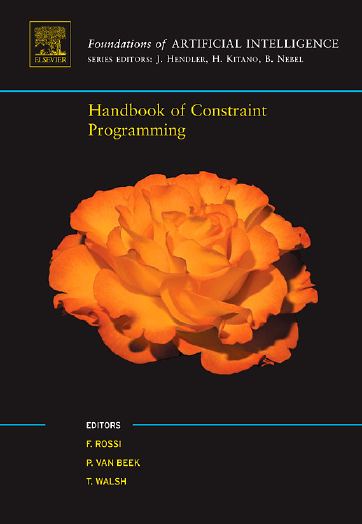

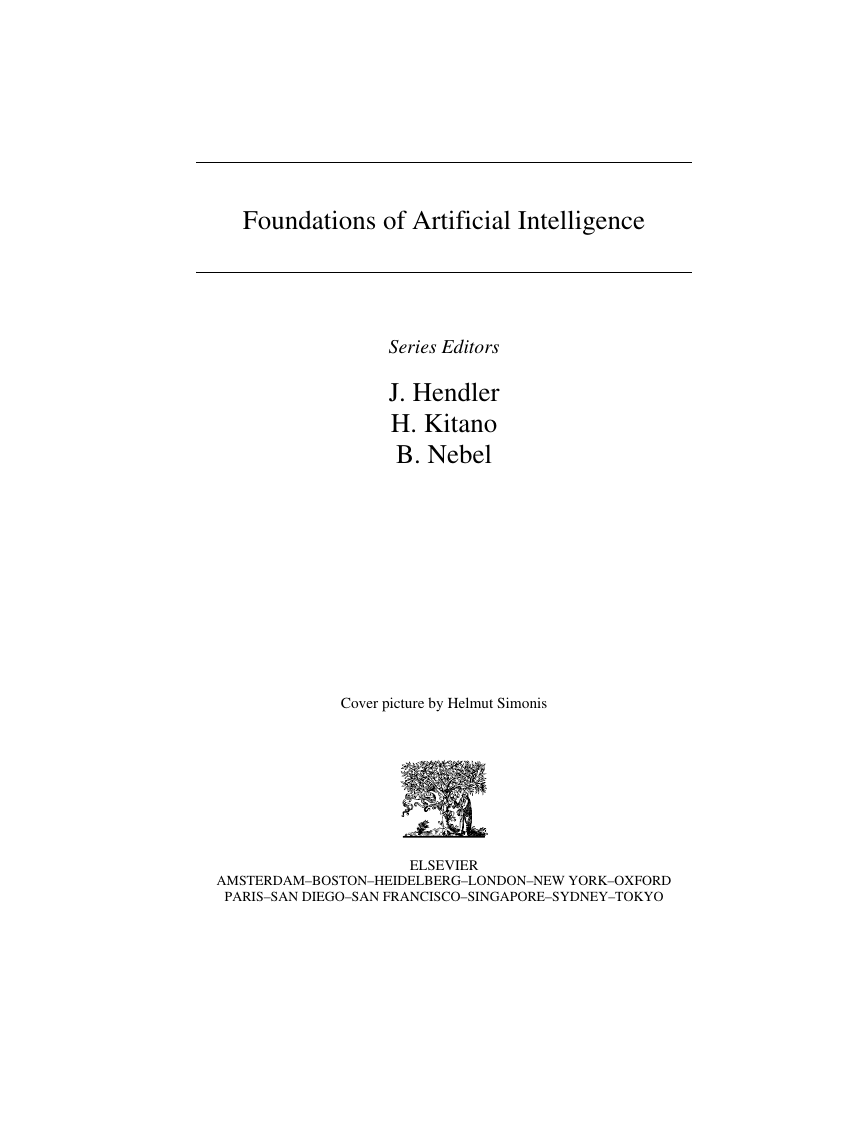

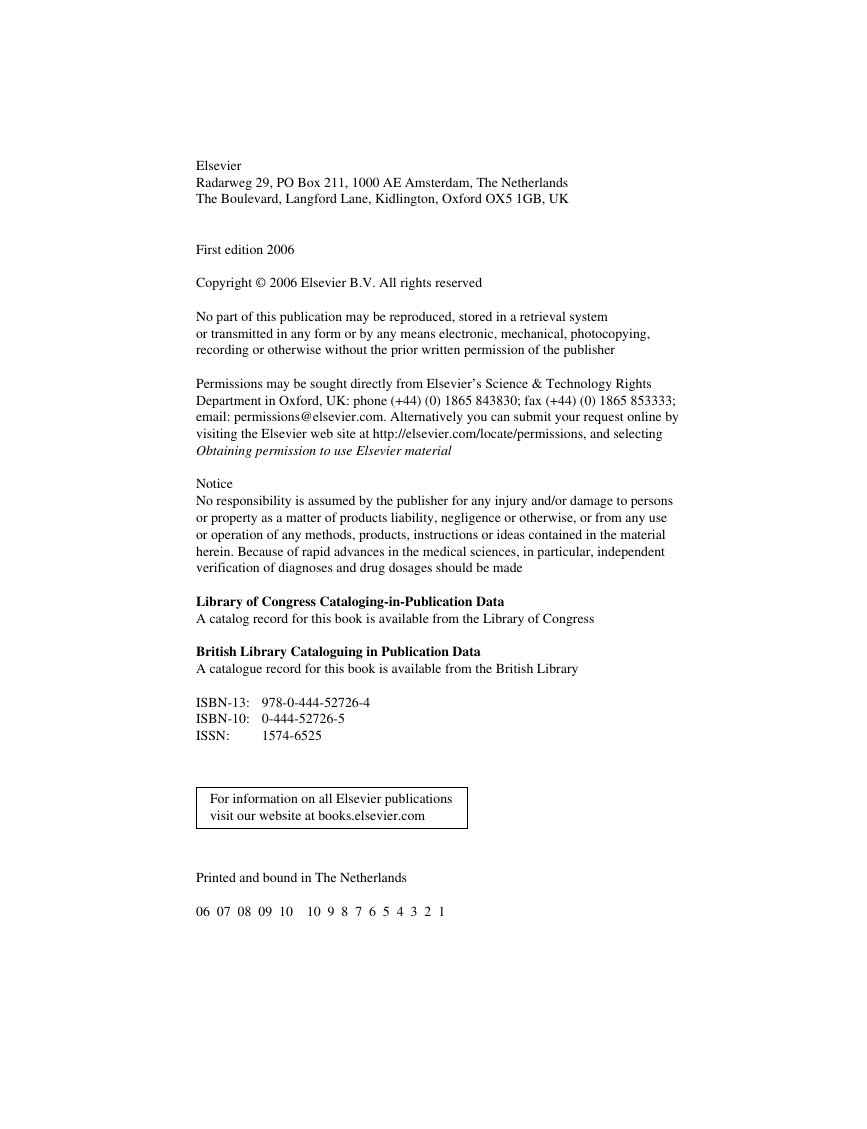
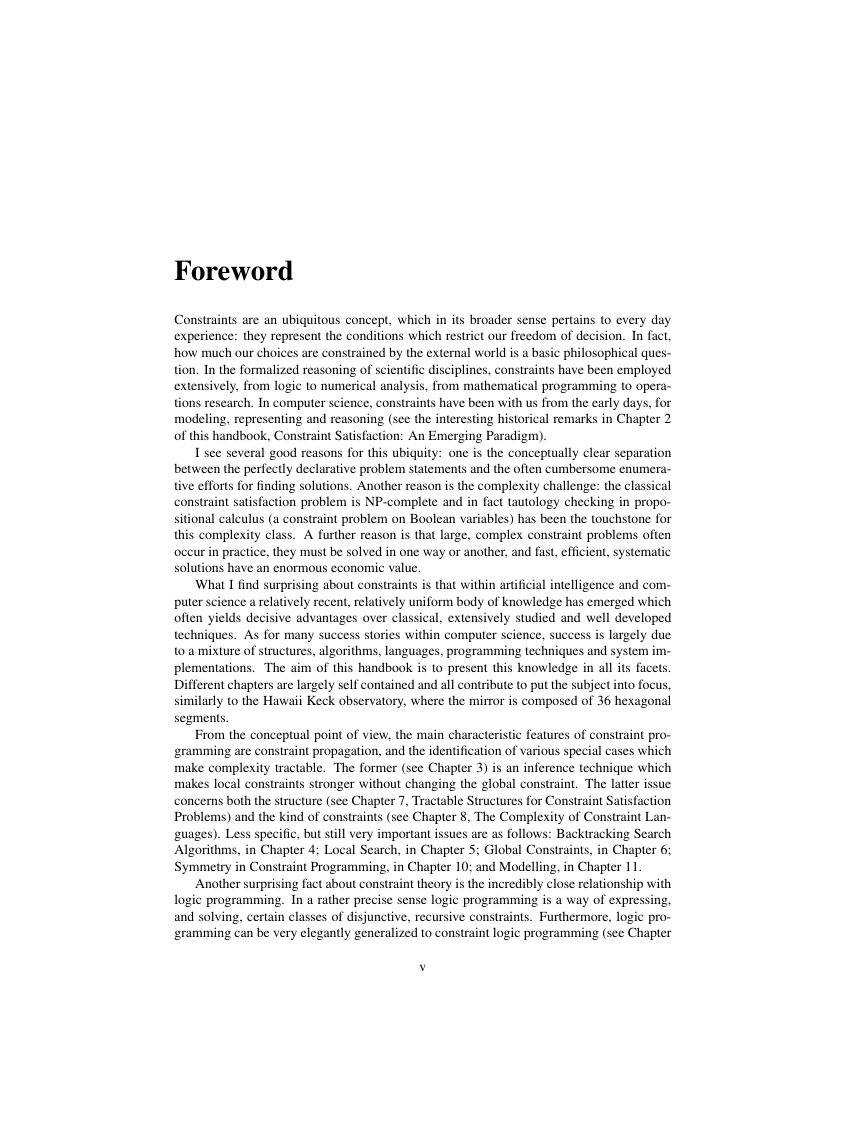
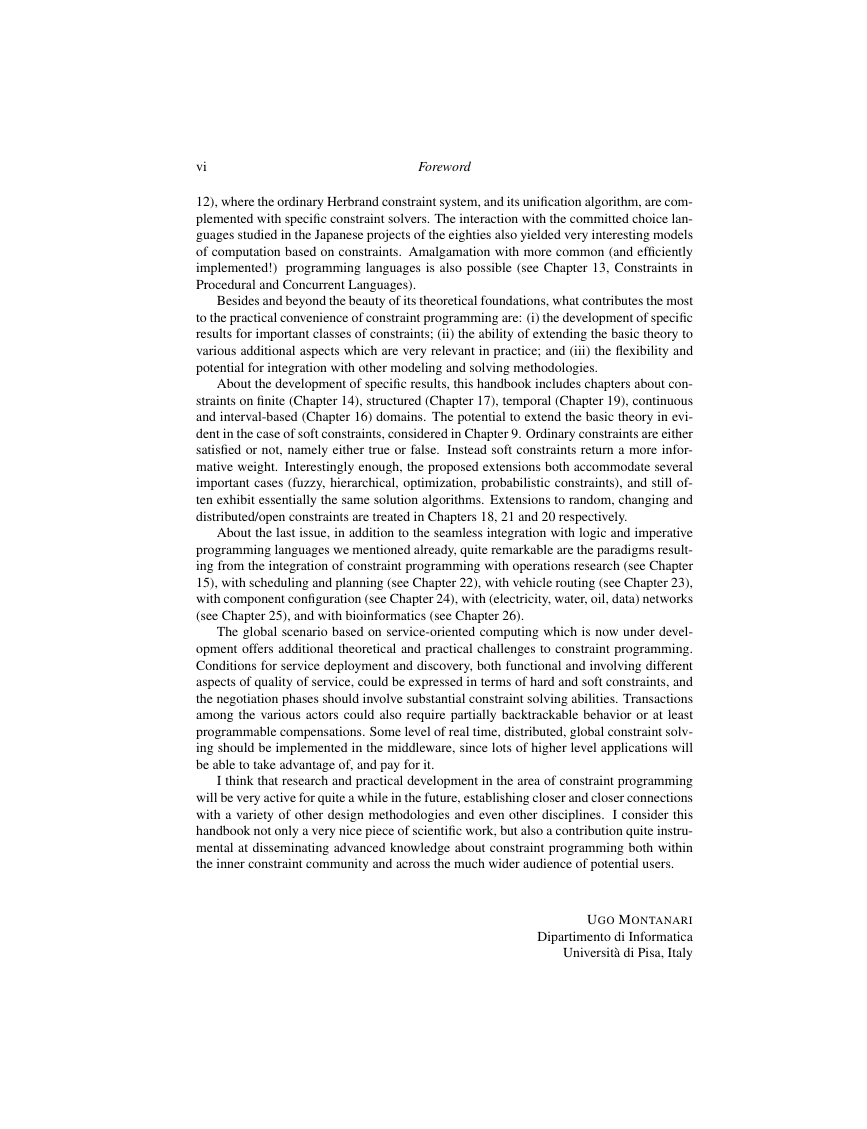
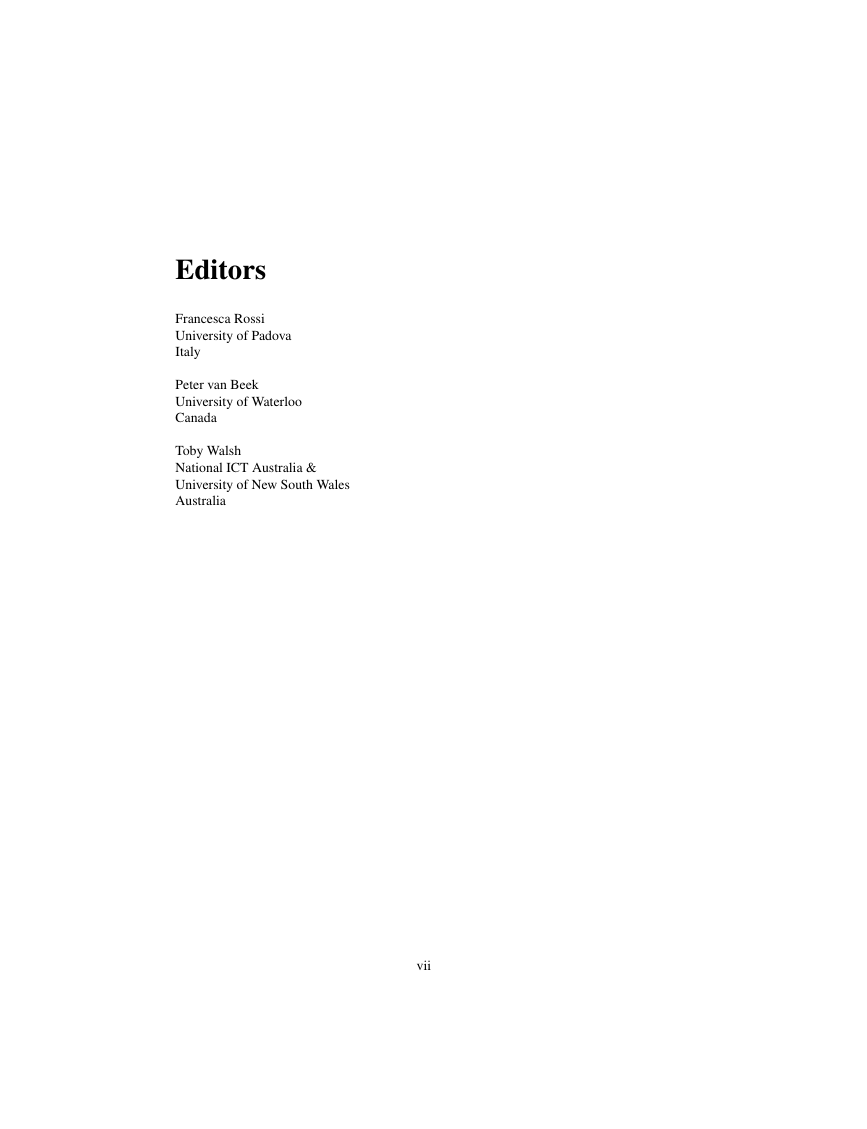








 2023年江西萍乡中考道德与法治真题及答案.doc
2023年江西萍乡中考道德与法治真题及答案.doc 2012年重庆南川中考生物真题及答案.doc
2012年重庆南川中考生物真题及答案.doc 2013年江西师范大学地理学综合及文艺理论基础考研真题.doc
2013年江西师范大学地理学综合及文艺理论基础考研真题.doc 2020年四川甘孜小升初语文真题及答案I卷.doc
2020年四川甘孜小升初语文真题及答案I卷.doc 2020年注册岩土工程师专业基础考试真题及答案.doc
2020年注册岩土工程师专业基础考试真题及答案.doc 2023-2024学年福建省厦门市九年级上学期数学月考试题及答案.doc
2023-2024学年福建省厦门市九年级上学期数学月考试题及答案.doc 2021-2022学年辽宁省沈阳市大东区九年级上学期语文期末试题及答案.doc
2021-2022学年辽宁省沈阳市大东区九年级上学期语文期末试题及答案.doc 2022-2023学年北京东城区初三第一学期物理期末试卷及答案.doc
2022-2023学年北京东城区初三第一学期物理期末试卷及答案.doc 2018上半年江西教师资格初中地理学科知识与教学能力真题及答案.doc
2018上半年江西教师资格初中地理学科知识与教学能力真题及答案.doc 2012年河北国家公务员申论考试真题及答案-省级.doc
2012年河北国家公务员申论考试真题及答案-省级.doc 2020-2021学年江苏省扬州市江都区邵樊片九年级上学期数学第一次质量检测试题及答案.doc
2020-2021学年江苏省扬州市江都区邵樊片九年级上学期数学第一次质量检测试题及答案.doc 2022下半年黑龙江教师资格证中学综合素质真题及答案.doc
2022下半年黑龙江教师资格证中学综合素质真题及答案.doc